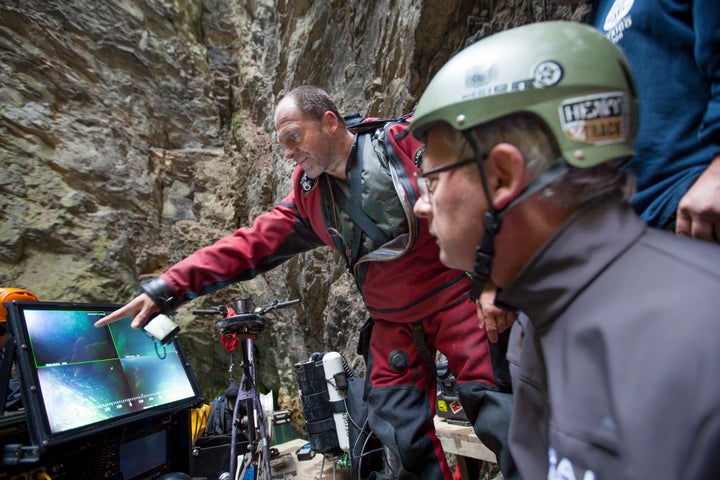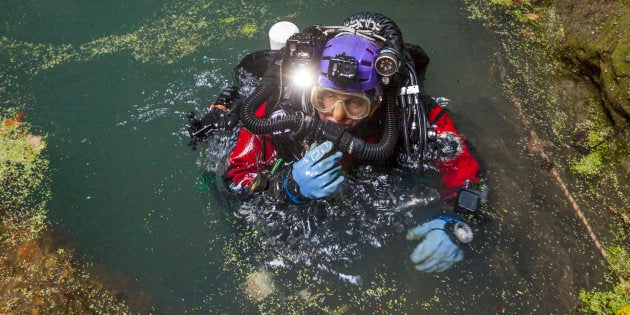

Explorers in the Czech Republic have discovered that a flooded limestone chasm in the eastern part of the country is the world’s deepest known underwater cave.
The cave, called Hranická Propast, is at least 404 meters (1,325 feet) deep. That’s about 12 meters (39 feet) deeper than the previous record-holder, a flooded sinkhole northeast of Rome called Pozzo del Merro.
The discovery came on Sept. 27, when a remotely operated vehicle (ROV) deployed by a Czech-Polish expedition plunged to the cave’s deepest regions and took a reading with its on-board depth gauge, according to National Geographic, which helped fund the expedition.
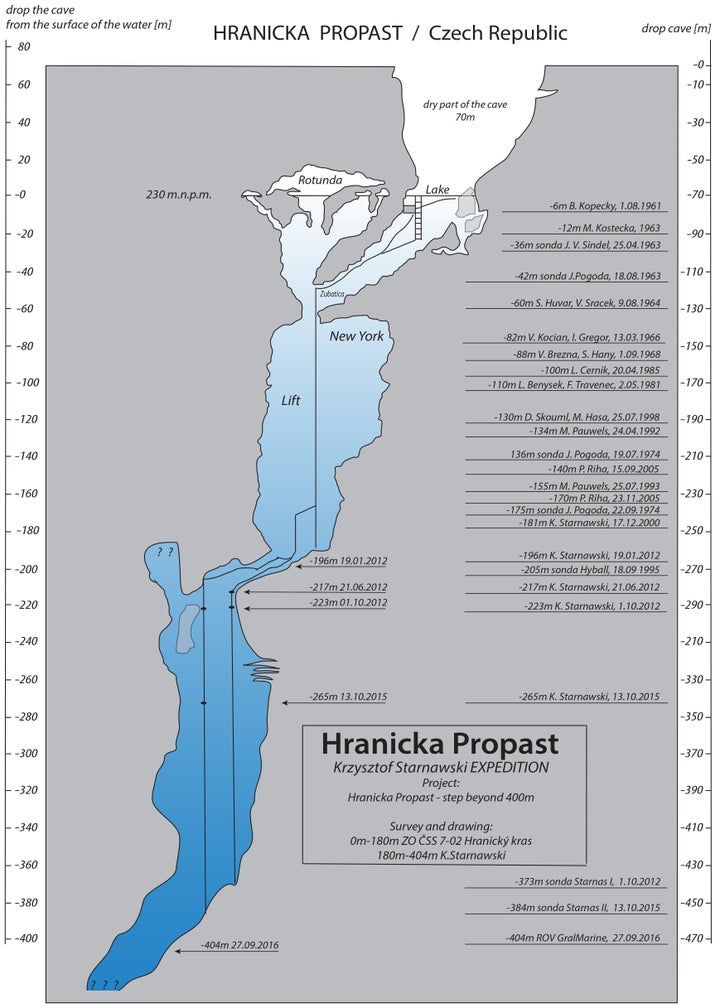
“I scuba dived down to 200 meters just before the ROV’s deployment to put in the new line for the robot to follow,” Krzysztof Starnawski, a celebrated Polish diver and the leader of the expedition, told National Geographic. “The goal was to give the ROV a good start from there to the deepest part of the cave.”
“We are 100 percent sure the measurements were accurate,” Starnawski told NatGeo, noting that the gauge was recently certified.
And the cave may be even deeper than 404 meters.
“There was a black abyss seen below the ROV when we decided to go up,” expedition member Marcin Jamkowski, a Polish photographer, told The Huffington Post in an email. “The place was full of trees, logs, branches and we did not want the ROV fiberoptic cable to be entangled somewhere.”
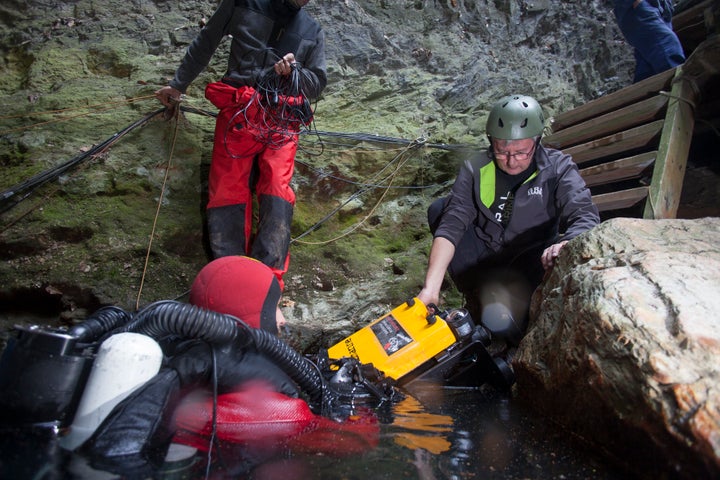
The explorers had to rely on the ROV for the deepest portion of the dive because those depths are beyond the safe limit for human divers, Jamkowski told HuffPost.
“There had been some dives done by the oil industry to such depths (so-called ‘saturation diving’), but they last approximately a month, surface to surface,” Jamkowski told Live Science. “This can never be done in the cave like this one, so the obvious choice was to send the robot where the man can’t go.”
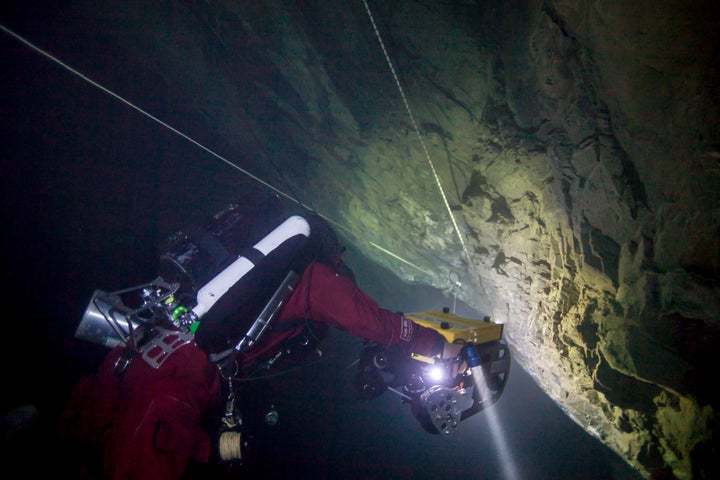
Conditions in the cave make diving difficult. The water runs about 15 degrees Celsius (about 59 degrees Fahrenheit), and its mineral content can be harmful to equipment and exposed skin, Starnawski told The Associated Press.
But Starnawski has been exploring the cave for almost two decades, making a series of ever-deeper dives over the years, according to NatGeo. Consequently, he knew what kind of gear he needed to stay safe ― and how many spares to take along in case something malfunctioned or got lost.
Starnawski wore an electrically heated drysuit with a helmet, Jamkowski said. The diver also had two masks, two breathing systems, two compasses, two flashlights, three video cameras, three cutting devices and two reels of thin line.
What was it like to make the discovery and survive to tell the tale? Starnawski told AP he felt like a “Columbus of the 21st century.”
